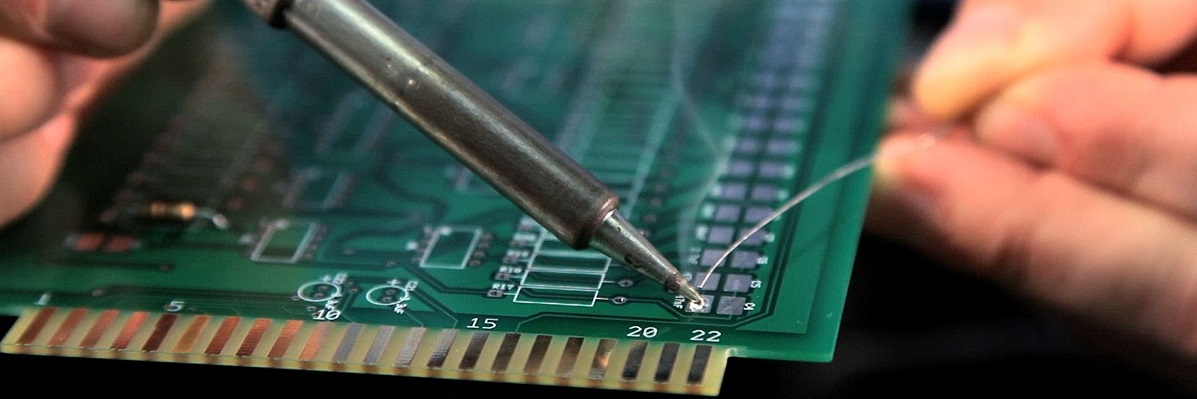
What is Soldering – The Fundamental Guide
A lot of folks use electronics with no clue of what actually happens inside of the device they have in their pockets or on their desk.
You might think about the chips inside of the computer, or the processing power, but do you think about the bridge holding many of the circuits on the silicon.
That bridge is solder, the meltable filler metal that has existed in one form or another for more than 3,000 years – long before the Digital Age.
But today, where that fillable metal shows up in about everything as a way to push power through the gadgets and connect circuits to silicon, even if it’s not necessarily doing any of the processing of your computing, makes soldering as an important topic to discuss.
What is Soldering?
It’s the operation of joining two or more electronic parts together through melting solder around the connection. Soldering is one of the core processes in the manufacture of electronic equipment. It enables electronic components to be joined and held in place too.
It’s the connective tissue of electronic construction and manufacture for the hobbyist/enthusiast or student as well as for commercial organizations producing electronic equipment on a considerable level.
While soldering is used in various industries, including the plumbing where it’s utilized to join pipes and seal them to prevent water from leaking out, and it’s used in the jewelry trade, among others.
How it Works
Solder is melted through heat from an iron connected to a temperature controller. It’s heated up to temperatures beyond its melting point at around 600 °F, which then it causes to melt, which then cools, creating the soldered joint. As well as producing electrical joint solder can also be removed using a desoldering tool.
What is the Difference Between Brazing and Soldering?
The main difference between brazing and soldering is the temperature necessary to melt the base metal. That temperature is determined to be 842 °F by the American Welding Society (AWS) but is often rounded to 840 °F. If the filler metal melts below 840 °F, the action being performed is soldering.
What is Solder?
It’s the material that melts around a joint and hardens to give electrical conductivity and mechanical rigidity. There are various types of solder. Basically, solder can be defined as a fusible (it can melt and become solid again) metal alloy used to make a permanent bond between two or more metal pieces.
The solder has a much lower melting point than the main constituents, and it can melt at temperatures that can be achieved easily and without specialized gear.
Solder can be used in many areas. Still, that specific object or machine must have a high level of electrical conductivity. It also aids if it’s resistant to corrosion since the joints and their conductivity degrade over time.
Solder can also be supplied in two different types and diameters, lead/lead-free and also can be between .032″ and .062“. Inside the solder, the core is the flux, a material used to solidify and improve its mechanical properties.
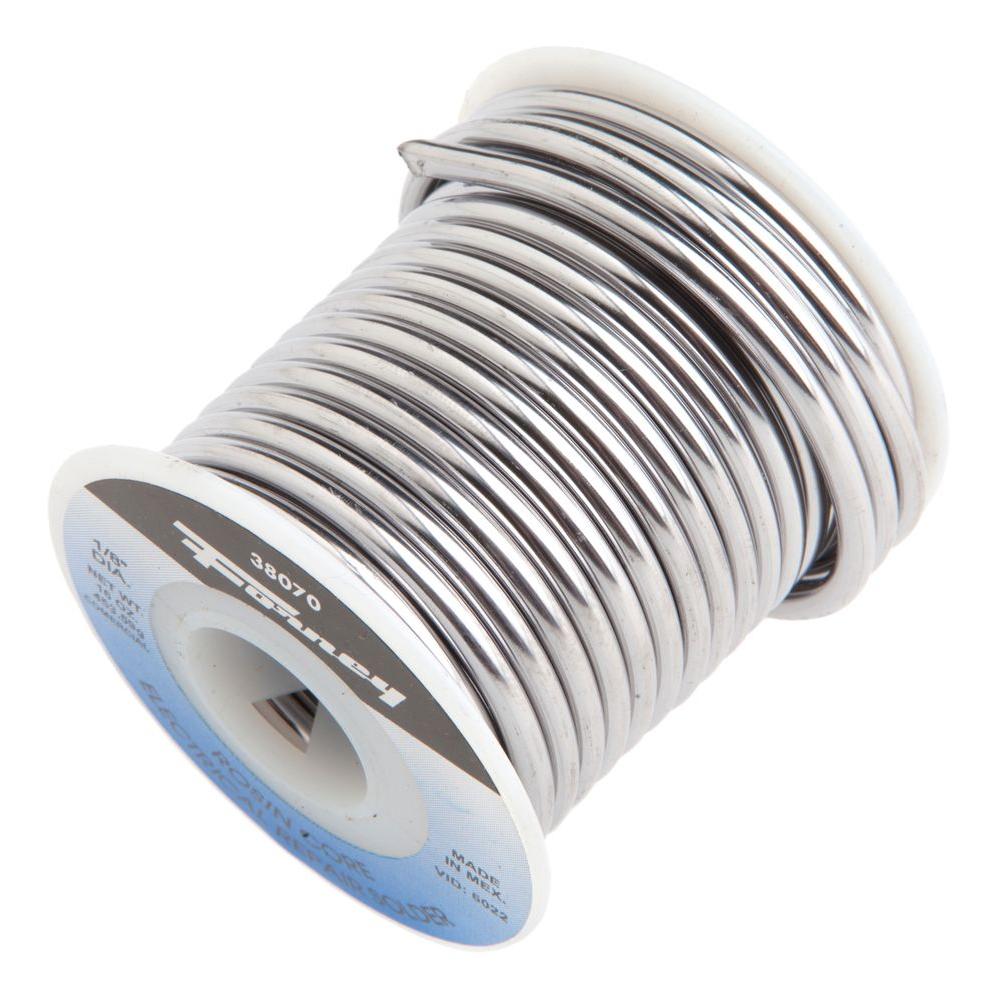
Types of Soldering
There are 3 types of soldering which apply increasingly higher temperatures, which in return produce progressively stronger joints:
Soft soldering
The soft-soldering is common in the electronics and plumbing industries. This technique makes electrical connections and ties electronic components onto circuit boards. It’s also utilized to join copper pipe and connectors.
The solder used in this operation is often made of a mixture of thin and other forms of metal. To secure a tight fit when bonding plumbing, add an acid substance (flux), to make sure the solder connects the pipes.
This type of soldering uses either an electric or gas-powered iron in most cases. The bond created by this method weaker than the bond produced with some other types of soldering.
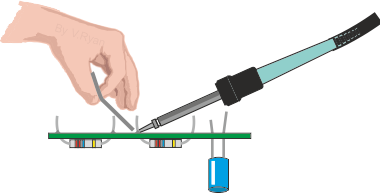
Hard soldering
Hard soldering produces a stronger connection compared to soft process and includes high temperatures to melt the solder material. This material is usually silver or bras and needs the use of a blowtorch to melt.
The metal being bonded is heated to a point which the silver or brass solder melts, producing a strong joint as it cools. In some situations, when someone employs silver as the solder material, this soldering may be called silver soldering.
Even though silver melts at a lower temperature compared to brass, it’s more expensive. Apply this soldering with silver solder when joining pieces of silver, brass, or copper, brass.
Brazing
Brazing includes a soldering material that melts at a higher temperature compared to hard and soft soldering. It’s similar to hard operation since the parts of metal being bonded together are heated, but not melted, throughout the bonding operation.
Once you heat the base metals, place solder material (filler metal), between the surfaces, it’ll instantly melt. The molten filler material connects the joint between the base metals via a process called capillary action.
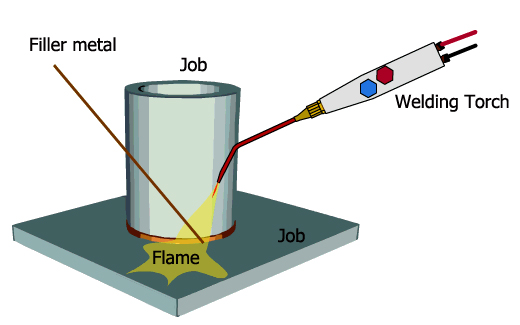
Soldering Tips
Since soldering is an important skill, you’ll want to learn the basic techniques quickly. Here are some great tips for efficient soldering:
- Use an iron for more delicate circuit boards and electronic The iron is made with an end piece shaped like a pencil tip. During soldering, the tip becomes hot and melts the solder;
- Soldering guns have a larger tip compared to iron and are designed for bonding larger items together;
- Soldering by a torch is typical when bonding copper and other kinds of pipe. It isn’t precise enough to handle intricate electronic connections, and the added heat could damage electronic parts.

What is a Soldering Iron?
It’s a hand tool that plugs into a standard 120v AC outlet and heats up in order to melt solder around electrical connections. This is one of the most important tools used in the soldering, and it can come in variations such as gun or pen form.
For beginners, it’s recommended to use the pen style iron in the 15W-30W range. Most of them have interchangeable tips that can be used for various applications. Be very cautious when using any form of this iron since it can heat up to 896 °F, which is extremely hot.
What is Soldering Flux?
It’s a type of chemical used in Automatic PCB Assembly and hand soldering. It’s basically used to clean the surface of PCB before soldering operation. Flux helps to clean and remove oxides and other impurities and thus helps in wetting. It’s usually made of rosin.
Soldering Techniques
There are different techniques used for small grade and high-grade soldering. Labor intensive schemes can’t be used for large level manufacture, where the high degree of automation is needed to provide the throughput required.
On the other hand, small level production for SMBs as well as prototyping and home building and construction for hobbyists, require methods that don’t need the large scale investment and set up necessary for mass production.
Two major soldering approaches include:
- Large scale production – Large scale production applies various methods including wave soldering and today more common method like IR reflow where the components are mounted on a board, and all the parts are soldered at the same time;
- Small level production – For low-level production and home construction, manual soldering methods with the utilization of an iron or solder wire are the most widely used approach. Some skill is needed to make useful and neat joints, but it can be learned quite quickly. This technique can be used for producing small projects, creating leads, and plenty of other applications.
MORE CONTENT
- How to Become a Blacksmith – Make Your Dream a Reality
- 22 Ideal Blacksmithing Tools for Beginners
- Top Gunsmith Schools & Program Comparison
- The 100% Explained Welding Guide
- 14 Most Efficient Welding Tools Today
- How to Get Welding Diploma – Welding School, Training, And Certification
- Brazing – All You Must Know
- 3 Powerful Ways on How to Braze Metal Like a Professional
- What’s the Main Difference Between Welding and Brazing?
- 7 Superb Techniques to Cut Metal
Soldering Materials and Tools
Below we’ve outlined the essential tools and materials you’ll need for most of your tasks.
Soldering iron
It’s a hand tool used to heat solder, typically from an electrical supply at high temperatures beyond the melting point of the metal alloy. It allows the solder to flow between the components needing to be joined.
Soldering gun
This gun has more power voltage than irons (from 100 to 240 watts). It gives you greater flexibility while working as well. Capable of working in confined spaces, which is more difficult with an iron, this gun has a tip formed like a loop of copper wire.
Soldering station
It’s a more advanced type of the basic standalone soldering pen. The key advantage of a soldering station is the ability to precisely adjust the temperature of soldering iron, which is excellent for a range of projects.
Solder
When choosing solder, make sure not to use acid core solder as it’ll ruin your components and circuits. Acid core solder can be found at home improvement stores and is chiefly used for plumbing and metalworking.
As mentioned earlier, solder comes in a couple of different diameters. The thicker diameter solder (.062″) is well-suited for bonding larger joints more quickly. Still, it can make soldering smaller joints more difficult. Therefore, it’s a wise idea to have both sizes on hand for your different assignments.
Helping hand
A helping hand is a tool that has two or more alligator clips and sometimes a magnifying glass/light attached. These clips will help you by holding the components you’re wanting to solder while you use the solder and iron.
Sponge
A sponge will help you to keep the iron tip clean by eliminating the oxidation. Tips with oxidation will incline to turn black and not accept solder as it did when it was new.
You could use a standard wet sponge, but it tends to shorten the lifespan of the tip thanks to expansion and contraction. Plus, a damp sponge will tumble the temperature of the tip temporarily when wiped. It’s better to use a brass sponge for this purpose.
Iron tips
At the end of almost all irons is an interchangeable part – a soldering tip. There are many models of this tip, and they come in a wide variety of shapes and sizes. Each tip is used for a specific aim and provides a significant advantage over another. The most common tips you will use are the conical tip and the chisel tip.
- Conical tip – Used in precision electronics due to its fine tip. Using the pointed end, the conical tip is able to transfer heat to smaller areas without affecting its surroundings;
- Chisel tip – This tip is suitable for wires or other larger components thanks to its broad flat tip.
Soldering Iron Stand
This is very basic tool but very practical. It helps prevent the top iron tip from coming in contact with flammable materials or causing accidental injury to the hand. Most soldering stations have this built-in and also involve a sponge or brass sponge for cleaning it.
How to Solder
Follow these 10 steps, and you’ll learn to solder quickly and successfully.
Step #1 – Begin with the smallest components working up to the taller parts, soldering any interconnecting wires last.
Step #2 – Place the workpiece into the board, ensuring it goes in the right way around, and the components sit flush versus the board.
Step #3 – Bend the legs slightly to secure the workpiece. Place the board so you can access the parts with an iron.
Step #4 – Be sure the iron is warmed up. If necessary, use a damp sponge or brass soldering iron cleaner to clean the tip.
Step #5 – Take the solder in one hand, and the iron in the other hand.
Step #6 – Put the iron tip on the pad.
Step #7 – Feed a small amount of solder into the solder joint. The solder should melt on the part and flow around the component leg.
Step #8 – Remove the solder and the iron.
Step #9 – Leave the joint to cool for 15 seconds, then use a pair of cutters to trim the excess component lead.
Step #10 – Finally, scrutinize the joint – it should look shiny.
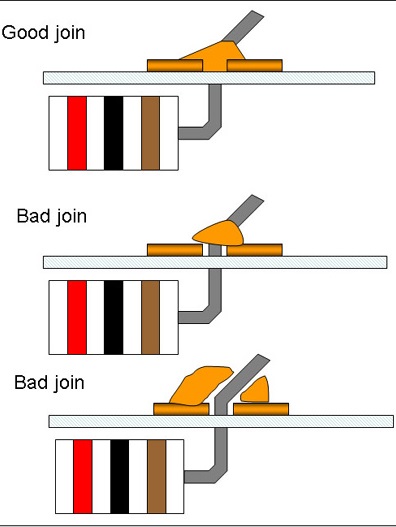
Conclusion
Before begging to build electronic circuits, it is essential to know what is soldering, how to choose a solder suitable for the jewelry, and not a type of solder used for plumbing, etc. Therefore, learning how to solder using proper soldering techniques is a crucial skill every maker should master.
